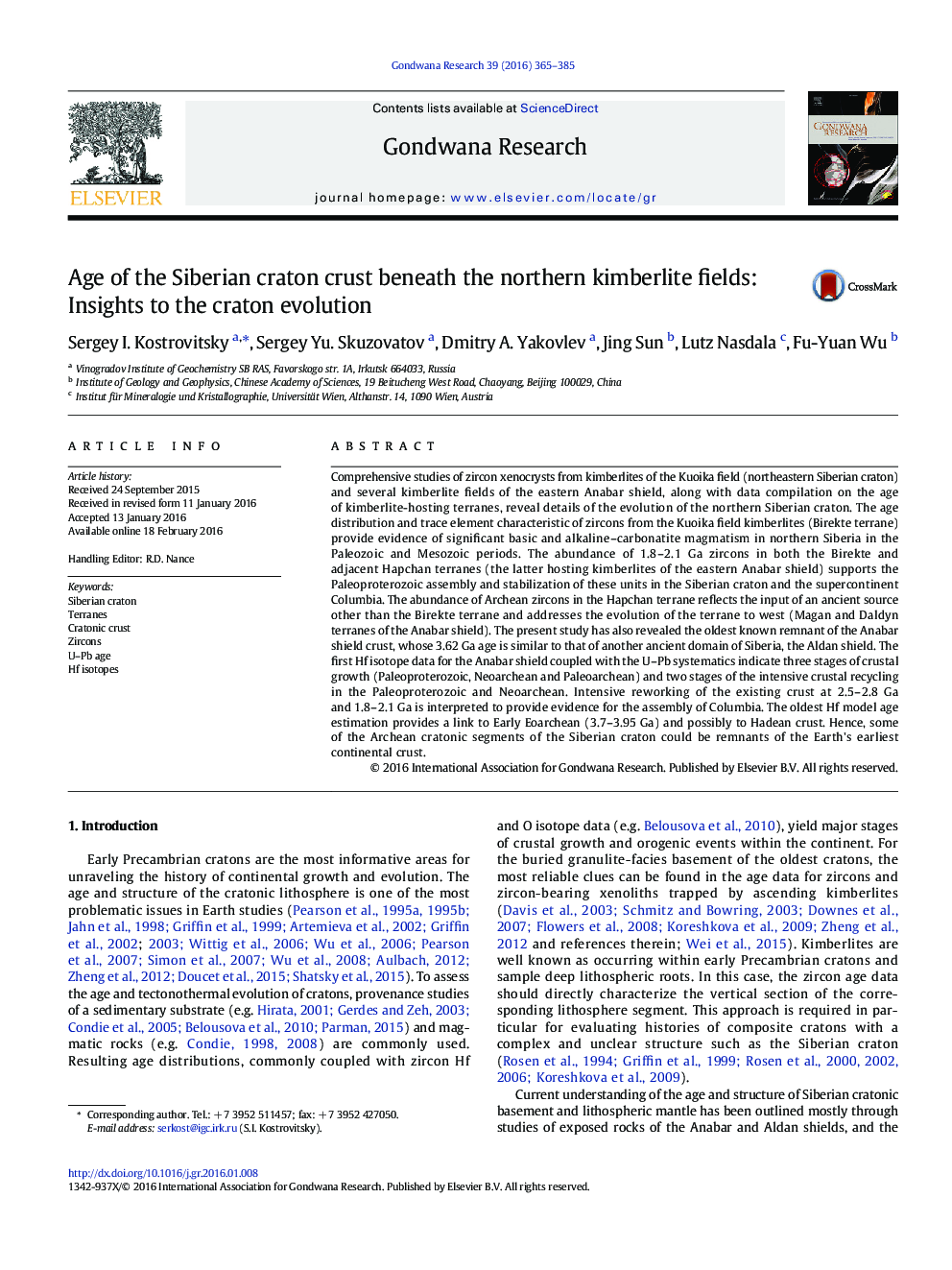| Article ID | Journal | Published Year | Pages | File Type |
|---|---|---|---|---|
| 4726579 | Gondwana Research | 2016 | 21 Pages |
•The evolution of the Anabar shield crust started in the Early Archean or Hadean.•The first evidence of Paleoproterozoic crustal growth has been revealed for Siberia.•Felsic crust of the Hapchan terrane has both Archean and Proterozoic sources.
Comprehensive studies of zircon xenocrysts from kimberlites of the Kuoika field (northeastern Siberian craton) and several kimberlite fields of the eastern Anabar shield, along with data compilation on the age of kimberlite-hosting terranes, reveal details of the evolution of the northern Siberian craton. The age distribution and trace element characteristic of zircons from the Kuoika field kimberlites (Birekte terrane) provide evidence of significant basic and alkaline–carbonatite magmatism in northern Siberia in the Paleozoic and Mesozoic periods. The abundance of 1.8–2.1 Ga zircons in both the Birekte and adjacent Hapchan terranes (the latter hosting kimberlites of the eastern Anabar shield) supports the Paleoproterozoic assembly and stabilization of these units in the Siberian craton and the supercontinent Columbia. The abundance of Archean zircons in the Hapchan terrane reflects the input of an ancient source other than the Birekte terrane and addresses the evolution of the terrane to west (Magan and Daldyn terranes of the Anabar shield). The present study has also revealed the oldest known remnant of the Anabar shield crust, whose 3.62 Ga age is similar to that of another ancient domain of Siberia, the Aldan shield. The first Hf isotope data for the Anabar shield coupled with the U–Pb systematics indicate three stages of crustal growth (Paleoproterozoic, Neoarchean and Paleoarchean) and two stages of the intensive crustal recycling in the Paleoproterozoic and Neoarchean. Intensive reworking of the existing crust at 2.5–2.8 Ga and 1.8–2.1 Ga is interpreted to provide evidence for the assembly of Columbia. The oldest Hf model age estimation provides a link to Early Eoarchean (3.7–3.95 Ga) and possibly to Hadean crust. Hence, some of the Archean cratonic segments of the Siberian craton could be remnants of the Earth's earliest continental crust.
Graphical abstractFigure optionsDownload full-size imageDownload as PowerPoint slide
